Executive Summary
The first half of 2024 has been a solid start for most advisory firms, with markets enjoying moderate growth (a pleasant follow-through after a particularly strong 2023!), client retention rates remaining robust, and at least a bit of client referral growth trickling in. Which is leading to healthy profit margins at the typical advisory firm, as more and more advisors eye the possibility that AI will produce even more business efficiencies (and stronger profitability) in the year to come. Fortunately, change never happens fast in the slow but steady evolution of the advisor industry, which affords advisory firms the time to pause and take a fresh look at the landscape of opportunities.
In this context, the approaching summer season will once again bring its usual respite – a time when most advisors take more time off (if only because clients are harder to pin down for summer meetings, especially as post-pandemic summer vacations away from home are back in full swing)… and find some time to read and catch up on a few good books!
For those who love to read, though (and especially for those who have limited time and will only get to read just 1 or 2 books over the summer), the perennial question is always, "So… what's a good book worth reading this summer?"
As a voracious reader myself, I've always been eager to hear suggestions from others of great books to read, whether it's something new that's just come out or an 'old classic' that I should go back and read (again or for the first time!). And so, in the spirit of sharing, a few years ago I launched my list of "Recommended (Book) Reading for Financial Advisors", and it was so well received that in 2013 I also started sharing my annual "Summer Reading List" for financial advisors of the best books I'd read in the preceding year. It quickly became a perennial favorite on Nerd's Eye View, and so I've updated it every year, with new lists of books in 2014, 2015, 2016, 2017, 2018, 2019, 2020, 2021, 2022, and a fresh round last year in 2023.
And now, I'm excited to share my latest Summer Reading list of top books for financial advisors in 2024, from new perspectives on how to transform your business into what you really want it to be (whether the goal is to "10X" the business, scale up the systems and dial back your own time, or get your team working together better), tactics to improve on client communication (from scripts you can use to cultivate more referrals, to better connect with clients and prospects as a "Supercommunicator"), ideas for reinvesting into your own under-developed capabilities to tap your "Hidden Potential", or ways to take a pause and consider how to improve your health and personal wellbeing (not just the business).
So as the summer season and summer vacations get underway, I hope that you find this suggested summer reading list of books for financial planners to be helpful… and please do share your own suggestions in the comments at the end of the article about the best books you've read over the past year as well!
10X Is Easier Than 2X: How World-Class Entrepreneurs Achieve More By Doing Less
(Dan Sullivan & Benjamin Hardy)
Advisory firms can grow to a remarkable size and scale over time, as some founder-led firms have grown to billions of assets under management and tens of millions of revenue by doing little more than 'just' marketing their advisory services to their ideal clientele, serving those clients well, and getting referred to more similar clients. For which organic growth rates plus market growth can quickly add up to 15% – 20% annualized growth rates… doubling the advisory firm every 4 to 5 years.
The good news is that doubling a business every 5 years or so can be ‘manageable’… growth creates new challenges, but a 5-year time horizon is long enough that team members can learn and develop new skills to be able to move up in the growing organization. There is a constant stream of change, but the changes are incremental enough to be tackled one at a time. The bad news, though, is that eventually, the organization can grow so large – after 15 to 20 years, a consecutive series of 2X growth stints produces an organization that is 10X the size – that incremental thinking turns from an asset to a liability, where the proverbial frog in the boiling pot phenomenon means that the firm fails to realize that “what got you here won’t get you there”.
So what’s the alternative? As authors Ben Hardy and Dan Sullivan suggest in “10X Is Easier Than 2X”, the key is to focus on what it would really take to 10X in the first place. Because the reality is that in order to 10X from where we are – wherever we are – it’s not really feasible to get there incrementally. Whether we’re going from 3 team members to 30 or from 10 team members to 100+, going so far as to 10X an organization means nearly everything you’re currently doing will break and have to be re-created. Which provides a powerful opportunity to get clear about what really matters and is core to the long-term success of the business – something that the company will 'have to' figure out in order to succeed.
For instance, an advisory firm that has 2 advisors and wants to double will need to hire another advisor or two in the next 5 years; a firm that plans to 10X needs to build a hiring system to attract and retain the next 18 advisors. An advisory firm where the founder has grown to 100 clients and wants to double can hire an associate advisor to transition those clients to in order to free up the capacity for the next 100; a firm that plans to 10X needs to build a marketing team to bring in the next 900 clients (far more growth than the founder alone could ever shoulder!). In other words, 10X thinking forces a fundamentally different mindset about how to solve growth challenges (a hiring system and a marketing team) than pursuing the ongoing path of incremental growth (the next advisor hire, the next ops associate, etc.).
The biggest caveat to the book, though, is that in the end, 10X is arguably no easier than 2X; it just creates a different host of challenges, from visioning larger-scale solves for future business needs to an incredibly difficult re-wiring of the founder’s own identity (if you want to 10X the business, it will need a full-time CEO… are you ready to cede control to one, or relinquish all of your own clients and stop being a “financial advisor” so you can be the “advisory firm CEO” the business needs you to be instead?).
And so, in the end, 10X may not really be easier than 2X. But for those who do aspire to 10X levels of growth, it's definitely easier to get there with a 10X thinking mindset, than by trying to string together a series of 2X growth cycles to get there more incrementally over time.
How Women Rise: Break The 12 Habits Holding You Back From Your Next Raise, Promotion, Or Job
(Sally Helgesen & Marshall Goldsmith)
It’s no secret that women make up a minority within the financial services industry (e.g., only about 24% of CFP professionals are female), and many women have at least one story about a scenario, incident, or careless remark that made them feel ‘othered’ or ‘less than’. And while no one, male or female, makes it to ‘the top’ in leadership or the financial advice industry without deep competence and knowledge, women also face unique barriers, particularly in the social scripts engrained since birth, that can make it difficult to rise to and thrive in leadership.
In "How Women Rise", Sally Helgesen takes the framework originally laid out in Marshall Goldsmith’s "What Got You Here Won’t Get You There" – in which Goldsmith tackles 20 different habits that hold leaders back from getting themselves and their teams to the next level – and discusses 12 different habits that women typically exhibit that may hold them back (since Helgesen and Goldsmith found that, upon closer examination of "What Got You Here Won’t Get You There", female leaders often faced a different set of habits and setbacks than “leaders” in the original book).
Helgesen notes that a part of why these habits proliferate in the first place is because women have been rewarded for exhibiting certain behaviors while being penalized for others – for example, 1 habit details how women are often reluctant to claim credit for their achievements compared to their male peers. Instead, they are more likely to either share recognition or not call attention to their achievements at all. In this scenario, there is certainly a lot to unpack around how 'ambitious' women can often be penalized, but Helgesen focuses on how women can recognize and overcome this habit on an individual scale, making the point that managers and executives won’t be able to see (or reward!) what’s not on their radars, and gives an actionable framework for those who struggle with this particular tendency.
Helgesen details several scenarios for each of the 12 habits, including ones that many women in leadership will likely resonate with – such as being the only woman in the room or being subject to an unfair double standard for how they may behave – and discusses the different scenarios with both curiosity and compassion. She encourages women to focus on what they can control and on finding small, incremental opportunities for improvement.
These habits may manifest in different ways for female advisors or women within the financial advice industry as they either lead a firm, give advice to clients, or are starting their careers. For example, Helgesen points to “minimizing” either oneself or one’s authority (Habit 9) for anyone who has ever been a chronic apologizer or downplayed their own knowledge – or, conversely, overvaluing the authority and expertise of others (Habit 3) and being reluctant to raise one’s hand and take the risks needed to accumulate that authority themselves. Notably, it’s unlikely anyone will have all 12 habits (since several of them contradict), but "How Women Rise" can give a solid framework to recognize and articulate the different socialization factors at play that many women (and men) face, and an approachable strategy toward improvement for women to continue evolving professionally and keep their careers moving forward!
Supercommunicators: How To Unlock The Secret Language Of Connection
(Charles Duhigg)
One of the most fundamental challenges in the financial advice business is that the advice itself is largely useless unless the person receiving it actually acts upon (i.e., 'takes') the advice; moreover, most financial advisors don’t even get the chance to be advice-givers until they can convince someone to pay them for it. And because human beings can be emotional, irrational, and unreceptive to financial (or other) advice, it’s not enough to simply 'know the answers' when providing financial advice; advisors also have to be able to communicate and build rapport with prospects and clients around that advice, too.
As a result, communication between financial advisors and their clients can be quite complex. Sometimes clients want to simply be guided on what to do. Other times they may ask for the advice but seem oddly resistant to taking it once received. And in other cases, clients just want a chance to vent and hear that they’re going to be OK, and beyond that don’t actually need any concrete advice at all.
The good news, though, is that these dynamics are quite navigable. As Charles Duhigg (of “The Power of Habit” and “Smart Faster Better”) highlights in his latest book, "Supercommunicators", these challenges arise from the concept that there are 3 different types of conversations that humans engage in, each with its own unique motivation: a practical decision-making conversation that Duhigg calls a “What’s This Really About?” discussion; a more “How Do We Feel?” emotional conversation; or a “Who Are We?” discussion about our identity and the social dynamics around us.
For example, in the parody “It’s Not About The Nail”, a couple struggles to connect in their conversation; while one is trying to solve the problem (a “What’s This Really About?” discussion), the other is seeking empathy for their emotional state (a “How Do We Feel?” conversation)… which notably mirrors a lot of client conversations in volatile markets where advisors bring up the logic of how volatility is often temporary while the client seeks emotional empathy because they’re scared (not because they’re looking for solutions). Or the advisor-client conversation where the advisor recommends the client stop providing so much support to the children so the client can shore up their own retirement, but the client’s perspective is based on their identity as parents first and future retirees second, which means the path they’re taking is the most 'rational' despite the risk to their own financial wellbeing during retirement.
Duhigg’s review of the research finds that the most effective communicators are the ones who can most readily identify which of the 3 conversations they’re having and be able to navigate between them (as, in practice, the nature of the conversation can change between the 3 as the discussion itself progresses); from the other person’s perspective, those we tend to feel most in sync with are the people who are most effective at matching themselves to the conversation they’re trying to have. Which makes Duhigg’s "Supercommunicators" especially helpful as a framework to more effectively identify and understand the answer to the question, “What kind of conversation are we actually having?”, offering valuable tips along the way about how to be the most effective conversation partner for each type of conversation.
The Language Of Referrals: The Words & Scripts Financial Professionals Use To Gain More Ideal Clients
(Bill Cates)
Virtually every financial advisor grows with referrals from existing clients; according to the latest Kitces Research on Advisor Marketing, a whopping 93% of financial advisors got a new client from a referral in the preceding year (and ostensibly, most of the remaining 7% were either simply closed to taking any new clients because they were already a mature practice at capacity, or were so new they literally didn’t have any existing clients yet to refer them!). For many financial advisors, this forms the foundation of their entire growth strategy: serve clients so well that the quality and outcomes speak for themselves so that those clients inevitably tell family, friends, or business colleagues, leading to referrals that start rolling in.
Yet the caveat is that while virtually every advisory firm grows from client referrals, most financial advisors are not fully satisfied with the volume of referrals they get relative to their growth goals. Kitces Research suggests that this is why the fastest-growing firms tend to rely on referrals the least and, for many advisory firms, the reason they generate the bulk of their growth from referrals is simply because they don’t engage in any other substantive marketing efforts in the first place (such that a passive flow of referrals is all that could possibly come in). Which raises the general question from advisors: What can we do to get more referrals from clients?
The answer, according to advisor coach Bill Cates, is simply this: Ask them. And in coalescing nearly 30 years of experience coaching advisors on how to more effectively ask for referrals, Cates’ latest book, "The Language Of Referrals", delves into exactly how to do this, with sample scripts that advisors can build upon and adapt to their style, and examples of referral conversations with clients to show how to navigate potentially awkward moments that might arise (e.g., with clients who don’t want to talk about referrals because they had a bad experience with a referral to another professional in their past).
Notably, Cates’ methodology does not simply go straight to the “ask for referrals” suggestion with clients. Instead, it’s built around what he calls the "V-I-P-S" methodology – start the conversation by asking about what Value the client feels they receive from the relationship, treat the conversation with Importance (if you really believe in the value of the work you do, there’s nothing wrong with consciously creating some space at the end of the meeting to have the conversation), ask for Permission to brainstorm (around people they know who might be a good fit), and then Suggest either names (I’d like to meet your business partner, John) or categories (I’ve helped you navigate through your tough divorce over the past 2 years; do you know any other divorcées who might benefit from the services I provide?). All of which builds up to asking not for generic “referrals” to people the client knows, but instead for concrete introductions to particular people who would have a need and reason to explore the advisor's services.
Ultimately, some advisors will still feel uncomfortable about asking for referrals because of the potential objections that arise from some clients (and while Cates provides scripts and guidance to navigate these situations gracefully, the fact that he has to also accentuates that the issue is there) and may instead opt for Stephen Wershing’s alternative approach to not ask for referrals (from his book "Stop Asking For Referrals"), built around making yourself more specialized so you’re more naturally referrable in the first place. Though, in the end, both books highlight how the best and easiest referrals tend to come when the advisor is very clear on who they serve best so that clients more readily understand the right kind of person to refer, or when the advisor can be more explicit about asking for introductions to specific people the client knows would be a good fit… so that everybody wins!
The Advisor Transformation: The Ultimate Guide To Growth, Freedom, And Joy for Financial Advisors
(Shawn Sparks)
When advisory firms first get started, there’s very little that the advisor can actually control. They can promote their services, but they can’t make people reach out to learn more. They can explain their services to prospects who do reach out, but they can’t make them agree to engage the firm. Fortunately, the proverbial “Game Of Numbers” means that if advisors are in touch with enough prospects (and get enough “no’s”), inevitably some percentage of those prospects will decide to say “yes” and become clients. And because the one thing we can control is the amount of activity we engage in, we can expect that the higher the volume of growth activities, the greater the number of clients we can eventually get.
However, while focusing on activity – and the connection that more-activity-equals-more-dollars – may be a remarkably effective way to drive results in the early years of a practice, it can eventually become problematic as the practice matures. Because there are only so many hours in the day and week, advisors are limited to engaging in only so many hours of total activity, and as they accumulate more clients, they have less time to grow (or even manage) the business. Such that trying to cram in more time on top of that, like pushing the tachometer of a car, can result in something that goes very fast but that potentially causes permanent damage if too much time is spent 'redlining' the engine as it overheats.
In his book “The Advisor Transformation”, advisor coach Shawn Sparks explores how advisors who are hitting the “red line of success” (high income that comes at the cost of being a slave to the business with little time for self and family, or stagnation because there are just no more hours to put in more activity to grow more income) can begin to scale the business beyond being so reliant on themselves in an effort to unlock higher income and more personal freedom.
What follows is a framework that Sparks discusses through 5 core principles to scale, starting with Vision (are you clear on what you really could, would, and want to build that goes beyond yourself?), then turning to Operations (which starts with getting clear on what your time is worth, which both clarifies what to delegate first and provides some clarity about the financial incentives to do so), followed by Marketing (you can’t scale the business beyond yourself until you create marketing systems that go beyond the limits of your personal activity and capacity and differentiate your firm from all the other advisors doing the same), then Sales (by separating 'selling advisors' from 'service advisors' and then creating a repeatable sales process all the selling advisors can follow), and finally Culture (if you want to keep the team that grows around you to scale the business, you need to create and protect a culture they want to be a part of!).
Of course, the reality is that such business strategies are far easier said than done, but Sparks’ “Advisor Transformation” is notable in its outright acknowledgment of how hard it is to engage in these kinds of changes, and the abundance of examples describing how other advisors have navigated (or struggled with) each of these domains and what helped them change their mindset and tactics to get over the hump. In fact, there are so many nuances of applying these scaling tactics effectively that, for advisors actually going through the change, “Advisor Transformation” is a book worth reading more than once for those figuring out how to keep improving along the way!
The 2nd In Command: Unleash The Power Of Your COO
(Cameron Herold)
Founding visionaries tend to get the bulk of the visibility and fame in the business world, but the reality is that it takes more than just a visionary founder to build a business. Not only because it simply takes more people to do the work of the business than literally just the founder, but also because the full scope and complexity of a sizable and growing business requires a wider range of talents than any one leader can possess. As the saying goes, “If you want to go fast, go alone; if you want to go far, go together.”
In practice, this is why businesses typically form leadership teams as they grow, implementing a number of fairly standardized functions and roles, including someone to lead marketing and sales efforts (e.g., a Chief Marketing Officer) and someone to lead the service or product of the business (e.g., a Chief Technology Officer, or in the case of an advisory firm, a leader of the advisory and investment teams). However, the more visionary the founder-CEO is, the harder it will be for that person to translate their vision into an organization of rising complexity, which often necessitates a Chief Operating Officer (COO) to make the vision a reality and manage the team and resources necessary to make it happen.
In “2nd In Command”, Cameron Herold explores both the potential impact and the remarkably unique role of being a second-in-command COO to a founding visionary. As a second-in-command himself at multiple organizations (most notably including 1-800-GOT-JUNK, which grew from $2M to more than $100M of revenue in under 10 years – nearly doubling the business every year!) and founder of the COO Alliance, Herold explores the unique working relationship that CEOs and COOs develop.
In fact, what’s particularly notable about the COO position is that what a second-in-command needs to be successful is almost entirely defined by what the visionary-CEO needs to complement their own skillsets in the first place. In other words, while most other executive team roles (e.g., CMOs, CFOs) have traditional role descriptions, the COO’s job description should be designed as a complement to the CEO’s. Such that Herold highlights a number of different COO archetypes, all crafted in the context of how they work with the CEO – from the Executor (make the CEO’s vision happen!) to the Change Agent (the CEO needs my leadership to actually turn this ship around), to the Mentor (you’ve scaled a business like this before, show me the playbook) and the Other Half (do the things the CEO isn’t capable of doing), the Partner (let’s co-lead together), the Heir Apparent (someday, the CEO will be gone and this will be mine to manage), and the MVP (the CEO has put me in this key position of authority because they can’t afford to lose me!).
“The 2nd In Command” is written primarily for visionary founders, particularly those who may be having trouble bringing their vision to fruition in the business because their gift is seeing the opportunities, not rallying the team and leading them to the execution that makes it happen… and they need a second-in-command who can operationalize the vision to become a reality. With the caveat that because every founding visionary is different, so too is every COO, which means that while the right fit can be especially powerful, visionaries still need to be prepared to do a lot of looking to find the right one (though Herold’s book will certainly help founders crystallize what they’re really looking for!).
The Founder’s Dilemmas: Anticipating And Avoiding The Pitfalls That Can Sink A Startup
(Noam Wasserman)
The advisory industry has long positioned itself as one where financial advisors have the opportunity to build a business for themselves, cultivating a business where they attract and retain clients and profit from the services they provide. Over the past 20 years, this has been further amplified by the rising shift to independence, where advisors not only develop their own client base to serve and be compensated for, but also literally own the underlying business entity that can someday be sold for substantive enterprise value. Though the reality is that many advisors don’t seek out independent channels just for the opportunity to own their advisory business; they do so for the autonomy that comes with not being beholden to an employer’s way of doing things, and the ability to decide exactly how their clients will be served and how the business will be run.
However, the limiting factor is that an advisory firm can still only grow 'so far' before the founder reaches their personal capacity and has to decide whether to become a multi-advisor firm. Yet, at the point when they do, and when the additional advisor(s) begin to grow their own books of business, a new complexity emerges: how to ensure those advisors (and their growing slice of the revenue pie) actually remain as part of the business. Which creates friction for the founders of many independent advisory firms, when the whole purpose of going 'independent' was the autonomy to be able to choose the path and not be beholden to anyone else… whether to an employer or a partner.
In “The Founder’s Dilemmas”, Noam Wasserman explores the issues and ‘dilemmas’ that founders face when they have to decide whether and how to share ownership. Additionally, Wasserman shares how, as suggested by hundreds of fast-growth private startups that were studied, the trade-off boils down to a decision about whether the founder wants to be “king… or rich”. Finding that while exceptions do apply, for the most part, founders who insist on retaining all the control (i.e., being “king”) tend to limit their growth and, by not taking on capital and/or partners that could help them get to the next level, end up owning a whole smaller pie instead of a smaller slice of a much-larger pie (that would have made them “rich(er)” instead).
Of course, the fact that the most successful fast-growth startups tended to share equity and control beyond the founder does not automatically mean that adding partners to the business will grow it larger. It’s still crucial to be selective in choosing the right partners (and having a pathway to extricate yourself more quickly if a selected partner turns out to be the wrong choice) and determining the right time to introduce partners or key hires. To illustrate this point, Wasserman shares anecdotal stories across a wide range of companies – particularly in fast-growth sectors like technology and health sciences – alongside his broader quantitative data set of private companies.
Notably, “Founder’s Dilemmas” is not written specifically for the financial advisor industry, which tends not to have the level of hyper-fast growth that occurs in some other industries (where Wasserman has focused his research), and medium-growth service businesses like advisory firms don’t always face the same dynamics. Nonetheless, the underlying principle of choosing between being “rich" or being "king” – whether it’s more important to keep autonomy and control, even at the risk that the business may not grow as large as it could have – is arguably quite salient to individual capacity and the dilemma faced by financial advisors of whether to introduce a partner. For which “Founder’s Dilemmas” provides some helpful mental models to consider!
Extreme Ownership: How U.S. Navy SEALs Lead And Win
(Jocko Willink & Leif Babin)
Financial advisory firms that build recurring revenue models, from assets under management to subscription fees, tend to have sky-high retention rates… so high that it’s a virtual inevitability that the financial advisor will eventually reach personal capacity for the number of clients they can handle and then face a crossroads decision: whether to maintain a solo practice that maximizes their productivity as an individual advisor or to begin the process of expanding the team into a multi-advisor firm.
The industry-standard answer to this crossroads has long been “hire more advisors and build a team and keep expanding”; though in practice, while some advisors relish the prospect of expansion (because they’re excited to grow and develop a team), others simply don’t want to take this approach (and consciously choose to remain solo practices), and many other advisors struggle with this decision to varying degrees. Because ultimately, most financial advisors got into the business in order to serve clients… not to be managers and leaders of teams, which requires a whole new skill set to be learned in attracting, training, developing, and retaining a great team.
In “Extreme Ownership”, authors Jocko Willink and Leif Babin set forth a series of team leadership principles drawn from their experiences as leaders of Navy SEAL Team 3 as it was deployed in Ramadi to fight against insurgents during the Iraq War where they found that ultimately, the most effective SEAL team leaders were the ones who took total responsibility (what they refer to as “extreme ownership”) of everything that happened: the good and especially the bad.
Underlying this relatively straightforward philosophy – that leaders should take responsibility for what happens with their teams – are several substantive and meaningful leadership lessons (which the authors illustrate in the context of SEAL Team 3’s various missions in Ramadi). For instance, team leaders often express frustration when they get ‘stuck’ with a team that has poor performers; an “Extreme Ownership” approach would instead say, “The poor performance of my team is mine to own, so how am *I* going to change what I’m doing to improve the outcome?” which might mean owning that the team leader needs to alter their leadership approach, adjust their hiring process, or revisit how they give feedback to team members. Because again, the whole point of “Extreme Ownership” is that if the team isn’t working well, it’s the leader's responsibility to do something about it to improve the situation!
Given this dynamic, what starts out as a book about how leaders should take “extreme ownership” really turns into a discussion about how leaders need to keep their egos in check and learn to take (and even seek out) constructive criticism and feedback, because the path to greater success as a team leader is about recognizing and accepting their responsibility to prioritize making changes and improvements (even and often in themselves) for the benefit of the team. Ideally, this accountability becomes part of the culture of the entire organization; otherwise, as Willink frames it, “If substandard performance is accepted and no one is held accountable… poor performance becomes the new standard.” Which boils down to total responsibility that all starts with the leader.
The 5 Dysfunctions Of A Team: A Leadership Fable
(Patrick Lencioni)
Advisors who have been a part of a close-knit, functional, united team can usually identify that their team is working well together, but can find it hard to articulate what is actually being done differently that makes the team work well. The same can be said, conversely, of a dysfunctional working environment –those who are in one can usually express why it might feel bad and why nothing is getting done, yet may still have a hard time determining why one team runs effectively while another does not. Which is problematic when a team is dysfunctional, because it’s often unclear what needs to be done to turn a dysfunctional team into a healthy one!
In "The 5 Dysfunctions Of A Team", Patrick Lencioni outlines the 5 components of a dysfunctional team. Which starts with an Absence Of Trust (when the team is unwilling to be open with one another), leading to a Fear Of Conflict (if the team can’t communicate openly, they can’t highlight problems they see that need to be addressed), which results in a Lack Of Commitment (no one has buy-in at this point!), culminating in Avoidance Of Accountability (“It’s not my fault, I could have told you this was going to fail, but you didn’t want to hear it"), and finally causes Inattention To Results (nothing seems to be getting done around here… what gives!?).
In a work environment, the final symptoms of the dysfunctions are often the most visible; mainly, it’s easier to see the inattention to results and avoidance of accountability. Yet as Lencioni’s framework highlights, it’s actually the first few dysfunctions that are often the underlying cause. For example, why isn’t a team paying attention to the results of a marketing strategy? Because they’re avoiding accountability, caused by a lack of commitment to the strategy in the first place. Why didn’t they work through their lack of commitment to this strategy before (reluctantly) executing it? Because of a fear of (constructive) conflict – they didn’t want to raise their disagreements with other members of the team, because of a fundamental absence of trust that their peers (and managers) would hear them out.
However, for advisors reading this book, there’s another angle to consider – the (potentially dysfunctional) relationship between advisors and their clients who won’t implement the advisor’s recommendations. As while one of the most difficult parts of giving financial advice is often not the crafting of the advice itself… it’s getting clients to act on that advice. Advisors may be frustrated with the symptoms – the lack of commitment, avoidance of accountability, or inattention to results – without first taking the time to trace it back to the root causes – namely, a fear of conflict and an absence of trust. Which can be unearthed by considering the simple questions: “Do I feel comfortable confronting my clients if they’re pursuing an unhealthy course of action?” And perhaps more importantly, “have I created an environment where my clients can disagree with me if they don’t like the advice?” If not, there may be a fear of conflict… which can lead to a lack of commitment… and then clients won’t implement their recommendations!
The key point is that diagnosing dysfunctions is often easiest with the last few symptoms (i.e., lack of commitment, accountability, and failure to achieve results), for those who suspect that some level of dysfunction has crept into their client/advisor relationships, creating trust where there is an absence of it is the starting point. Sharing personal histories and understanding more about where the person ‘across the desk’ from you is coming from is a great way to establish trust. Similarly, for those who fear conflict, inviting the client to push back a minimum number of times on ideas offered by the advisor during a meeting (e.g., “I’m expecting to hear you challenge some portion of my advice at least 2 times in the next hour of this meeting!”) can help them share their reservations and doubts more freely.
For those looking to help their clients take (more consistent) action and build stronger relationships with them, "The 5 Dysfunctions Of A Team" can create a great framework to name the problem, improve a client’s actionability, and ultimately strengthen the client/advisor relationship!
The 80/80 Marriage: A New Model For A Happier, Stronger Relationship
(Nate Klemp & Kaley Klemp)
In a stereotypically ‘traditional’ heterosexual marriage, the husband acts as the breadwinner, earning money outside the home, while the wife tends to their house and takes on the vast majority of parenting responsibilities for their children. In this “80/20” household model, the wife might take on 80% of household responsibilities – both physical tasks (e.g., cooking and cleaning) and the ‘mental load’ of managing the family’s affairs (e.g., getting the kids to various school activities) – while the husband would take on the remaining 20% (perhaps based on a ‘honey-do’ list created by the wife).
While this structure remained common for many years, a more egalitarian view of marriage became popular in the latter half of the 20th century. Today, many couples strive to avoid the “80/20” model and attempt to take a “50/50” approach, where household responsibilities are shared equally between partners (particularly when both spouses work outside of the home as well). However, actually achieving a 50/50 marriage can be challenging, given varying work schedules, and the wide range of household tasks that must be completed. Further, striving for a 50/50 marriage can lead to ‘keeping score’, where each spouse keeps a close eye not only on what tasks they finish, but also on what their spouse takes on, to confirm that both partners are sharing the burden equally (which can lead to animosity if one partner thinks they are carrying a heavier burden!).
Given the challenges of achieving a truly 50/50 marriage, married couple and authors Nate and Kaely Klemp suggest an alternative framework: “The 80/80 Marriage”. Using this approach, each spouse acts generously when it comes to handling household tasks and supporting their partner, putting in more effort than their ‘required’ 50%. For instance, one spouse might take over cooking duties for the night if the other spouse (who usually cooks dinner) has to work late, without feeling like they deserve ‘extra credit’ or a commensurate favor from their partner in the future. In this way, even if each spouse doesn’t actually complete 80% of the household work (which is mathematically impossible for both to do at the same time), the mindset and approach of mutual giving means they will likely develop mutual appreciation for the extra effort their partner is putting into the relationship (resulting in a healthier relationship without keeping track of an imaginary ‘scoreboard’ to maintain a 50/50 split!).
Notably, many of these lessons can apply beyond marriages, including to the workplace. For instance, while a 50/50 relationship amongst team members might entail everyone doing exactly what’s on their job description (and nothing more), an 80/80 approach would see teammates actively seeking to help each other out so that no single member is overburdened, likely leading to greater productivity and reducing the chances of burnout as the team takes turns supporting one another. Or, in the words of a Kitces Core Value for our own team, “Deposit More Than We Withdraw”.
Ultimately, the key point is that a mutual spirit of generosity can lead not only to a happier, more satisfying marriage, but also to a stronger workplace and team environment as well. Which suggests that establishing a more collaborative team culture (perhaps an “ensemble practice” model, where multiple advisors come together to pool their resources and their profits, collaborating to serve clients under a consistent standard), rather than emphasizing the individualistic ‘eat what you kill’ approach seen in sales-based advice models, could lead to a more cohesive firm and (at a time when competition for advisor talent is fierce) better staff retention!
Hidden Potential: The Science Of Achieving Greater Things
(Adam Grant)
Being a financial advisor requires a wide spectrum of hard and soft skills – meeting management, client communication, prospecting/sales… and that’s before getting into all of the technical expertise advisors need to have in order to serve their clients. And unfortunately, no one is intuitively good at everything. As a result, in the best-case scenario, advisors will need to learn and develop new capabilities over time – for example, by gradually rising from an Associate Advisor to a Service Advisor to a Lead Advisor – and trying to master the skill domains of each.
However, some financial advisors struggle with this skill progression over time, gravitating towards the areas where they have a natural ability and potentially even giving up on the rest that may not come nearly as easily. After all, why even try if you’re 'clearly' not good at something and it doesn’t feel likely that you ever will be? To say the least, it’s incredibly difficult to master a skill that an advisor struggles with.
In "Hidden Potential", Adam Grant highlights research showing that one’s ability to succeed often doesn’t come down to natural talent – instead, it comes down to a combination of the hours put in to develop the talent, sustained curiosity, and a commitment to learning (Grant uses the phrase “human sponge” frequently). The person who can maintain curiosity and commit to learning from a variety of critics, tutors, and other resources will eventually pass for having “natural talent” simply because they will have put in the time and conscious effort to learn and master the skills.
Of course, while this is easier said than done, Grant explores how the difference between imposter syndrome (“I don’t know what I’m doing. It’s only a matter of time until everyone finds out.”) and a growth mindset (“I don’t know what I’m doing yet. It’s only a matter of time before I figure it out.”) can make an enormous difference in how people tackle the skill gaps before them.
For advisors facing a long path of growth and skills to learn, becoming a “creature of discomfort” – that is, someone who continually seeks out opportunities to stretch and grow – is crucial to accumulating skill. In other words, the advisor who 'fails fast' but keeps trying often finds the keys to success. However, in order to maintain resilience in the face of discomfort, it’s necessary to build a good structure to ensure that advisors get the support they need, ideally in the form of good feedback and encouragement. For example, newer advisors may want to work proactively with a mentor or manager to master the skills that feel (just) out of reach and find concrete opportunities to learn new skills. On the other hand, advisors who have just launched their own firm may seek opportunities for feedback and growth in a peer group or a business coach.
One of the most cheering – and sometimes daunting – concepts in "Hidden Potential" is that opportunities for growth are endless; ultimately, though, the advisor who can prioritize well and find a way to get comfortable with discomfort can master skills that previously seemed far out of reach!
Outlive: The Science And Art Of Longevity
(Peter Attia)
The past 200 years have seen an absolutely astonishing rise in the average longevity of human beings; in the early 1800s, life expectancy from birth was only 30-something years for most countries; by the early 1900s, it was 40-something in North America, rising further to almost 60 by the mid-1900s, and higher yet to 70-something in the current century. Leading some to predict that at the current trajectory, today’s young people may all live beyond age 100, and that somebody on the earth today might be the first to make it to age 150!?
A deeper dive into the research, though, reveals some important caveats, most notably that the bulk of increases in life expectancy have been a result of improvements in sanitation and the emergence of antibiotics, which have drastically cut infant and child mortality and largely eliminated 8 major infectious diseases (including measles, scarlet fever, tuberculosis, and typhoid) that collectively caused 37% of deaths in 1900 but barely 2% of them today. In fact, once those health advances are factored in, human life expectancy has remarkably remained unchanged over the past century, and maximum human life spans (around age 120) have not budged at all. Instead, it’s simply turning out that when we don’t perish from the infectious diseases of the past, we simply die due to more slow-moving chronic diseases instead.
The good news, though, is that the factors triggering most human deaths today may be at least somewhat more controllable. This forms the foundation for Peter Attia’s “Outlive”, which highlights the chronic diseases that Attia refers to as the “4 Horseman”: heart disease, cancer, neurodegenerative disease, and metabolic dysfunctions (e.g., type 2 diabetes). And while there’s little evidence that tackling these diseases will do much to change the maximum human life span, we can impact our “healthspan” – squaring the curve of our healthy years to align to the total years that we’re alive and maximizing how long we have to do the things we enjoy.
What follows is a research-driven but accessible discussion of what we have learned about the 4 Horsemen and how to stave off or at least mitigate their impacts over time. The associated prescriptions are not revolutionary – they include regular exercise (being by far the most potent mitigator and even more protective than we may have previously realized, particularly as it pertains not just to our strength but also to our stability and peak aerobic capacity), the diet we eat (and a rising realization that protein, not carbs, may be the most important thing to focus on, because it helps to maintain our strength, which, in turn, supports our capacity to exercise), the quality of sleep we get, and the information provided by new blood tests like apoB that help detect earlier stages of cardiovascular disease.
In the end, Attia’s “Outlive” largely counsels us to do what our parents have long told us to do (eat well, exercise, and get a good night’s rest), but comes with a modern twist of the particular ways to do these things well based on the latest research, all built around a framework that Attia calls “Medicine 3.0”, where we focus less on treating health problems and more on establishing the good habits and preventative self-care we can engage in to enhance our longevity – not just by aiming to maximize the number of years we stay alive (i.e., our chronological lifespan), but also by optimizing our healthspan, which reflects how well we live during those years!
If you're still looking for more book ideas, be certain to also check out our prior summer reading lists, along with our overall list of recommended books for financial advisors. They may be lists we've published in the past, but if you haven’t read the books yet, they're still new to you! 🙂
Top Must-Read Books for Financial Planners
2023 Summer Reading List of "Best Books" For Financial Advisors
2022 Summer Reading List of "Best Books" For Financial Advisors
2021 Summer Reading List of "Best Books" For Financial Advisors
2020 Summer Reading List of "Best Books" For Financial Advisors
2019 Summer Reading List of "Best Books" For Financial Advisors
2018 Summer Reading List of "Best Books" For Financial Advisors
2017 Summer Reading List of "Best Books" For Financial Advisors
2016 Summer Reading List of "Best Books" For Financial Advisors
2015 Summer Book List For Financial Advisors
2014 Summer Reading List Of Best Books For Financial Advisors
2013 Summer Reading List Of Top Financial Advisor Books
So what do you think? Will you be reading any of these books over the summer? Do you have any suggestions of your own that you’re willing to share? Please share your own great reads in the comments below!




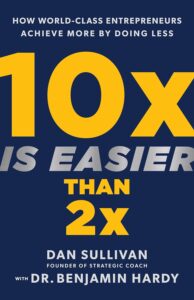
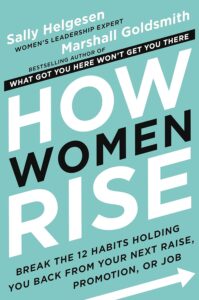
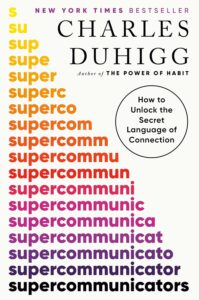
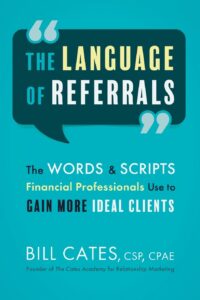
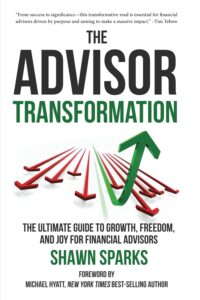
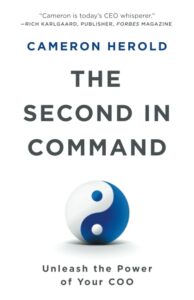
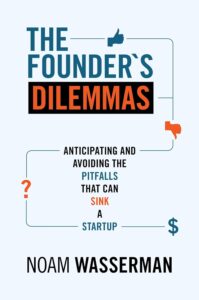
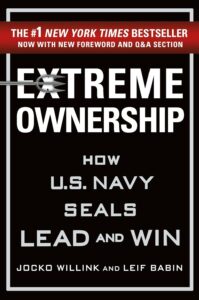
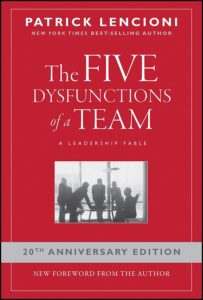
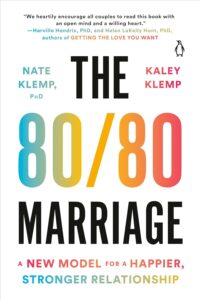
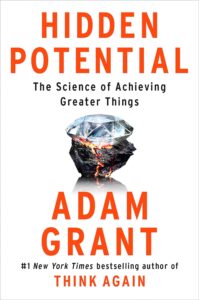
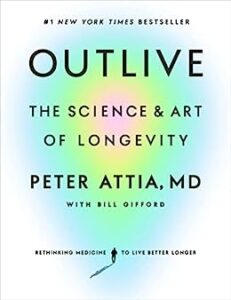



Leave a Reply